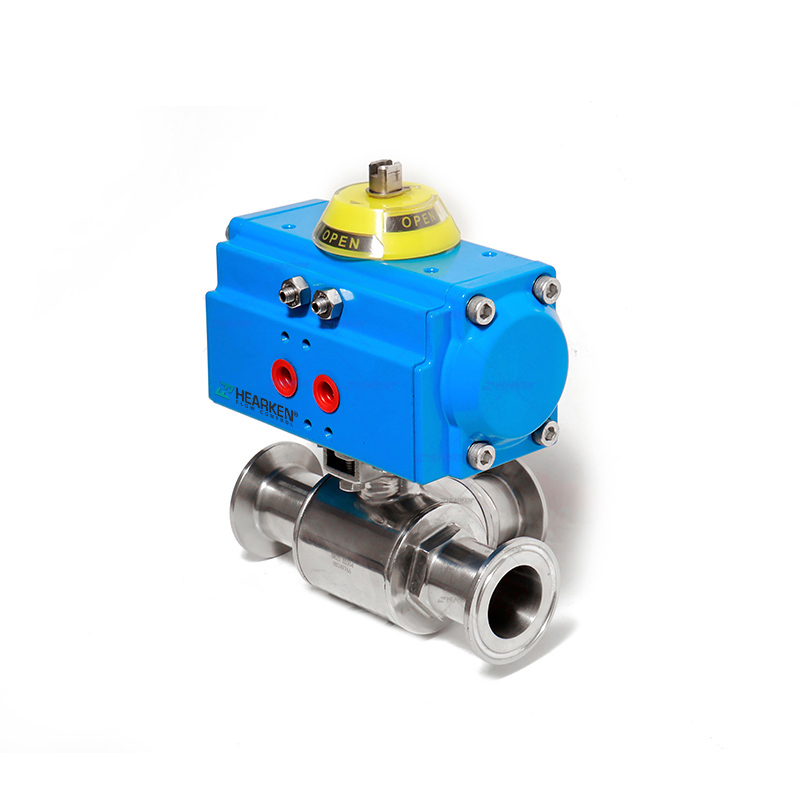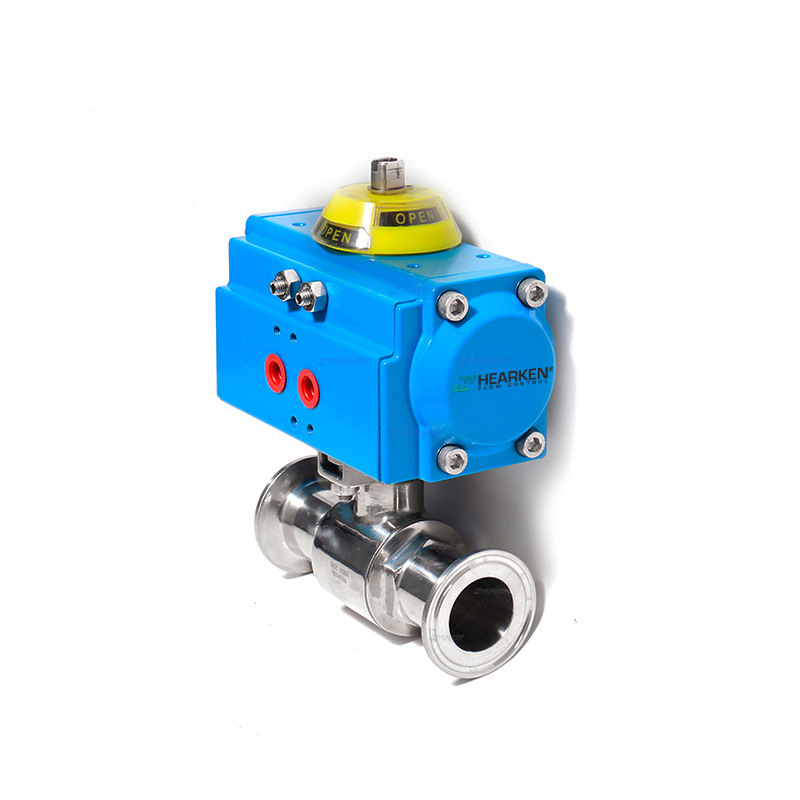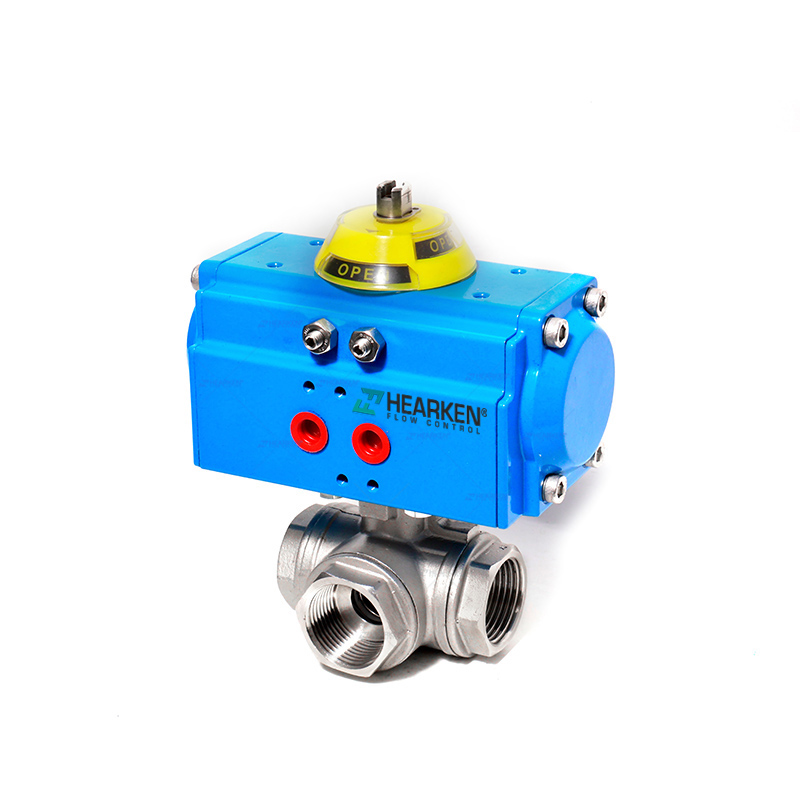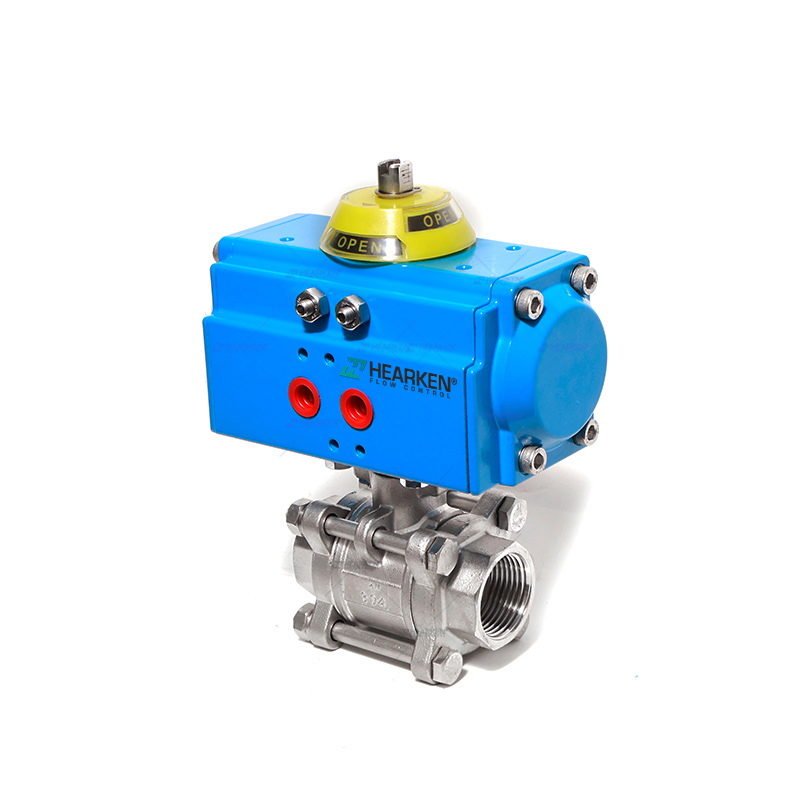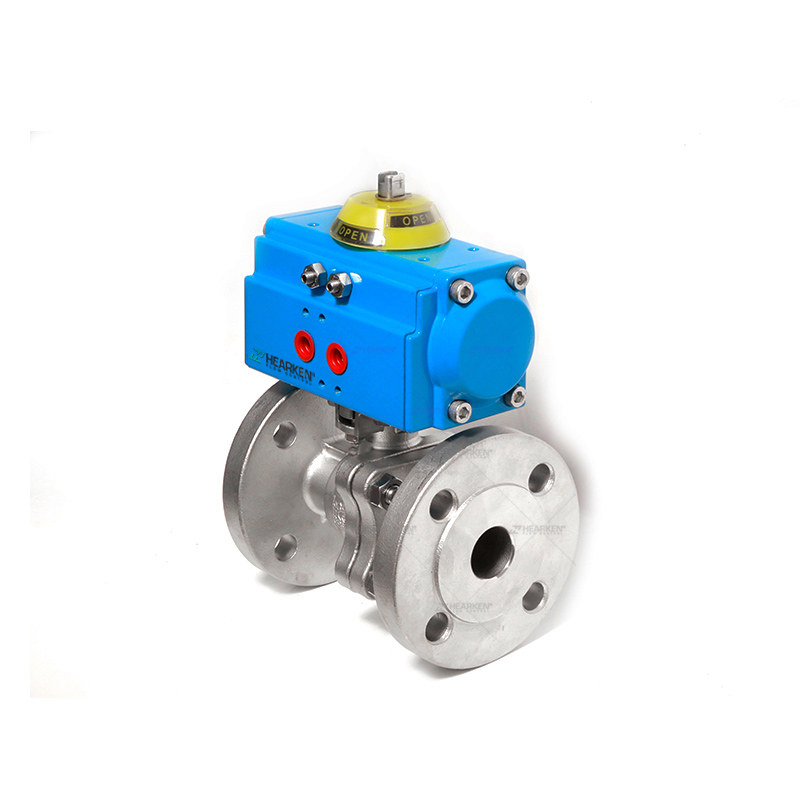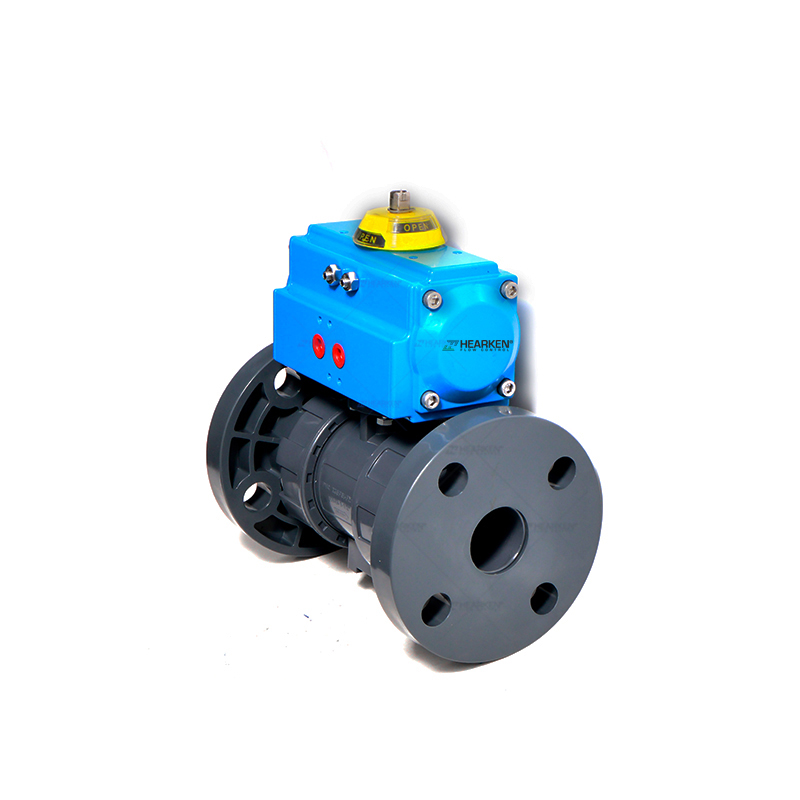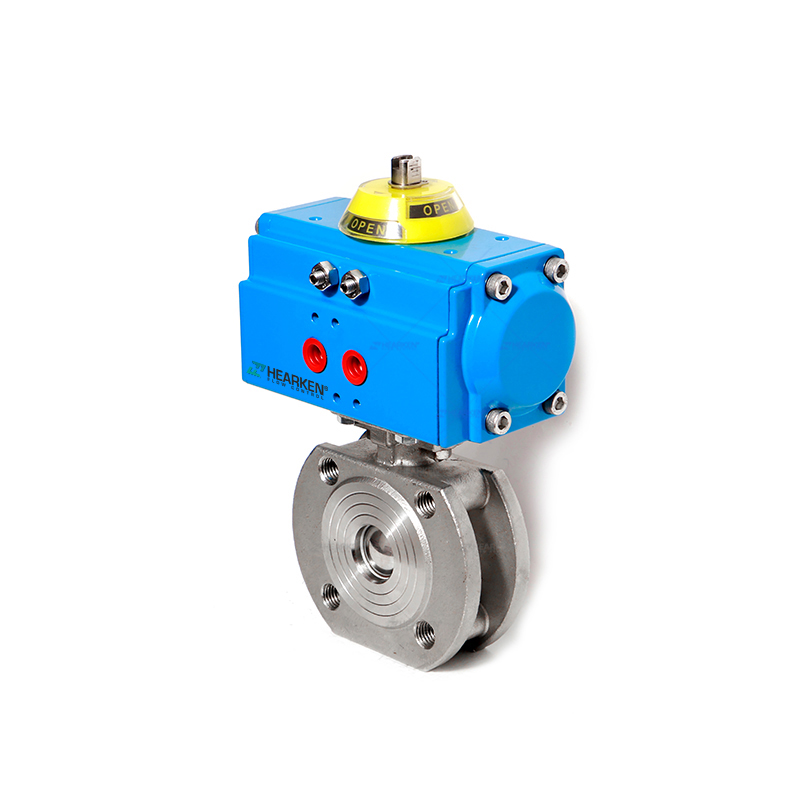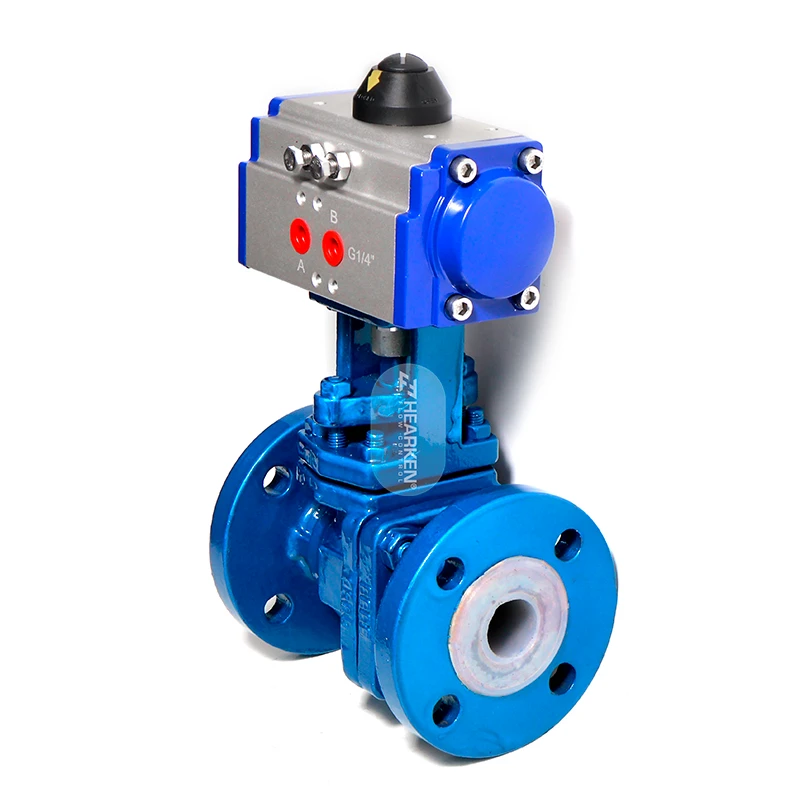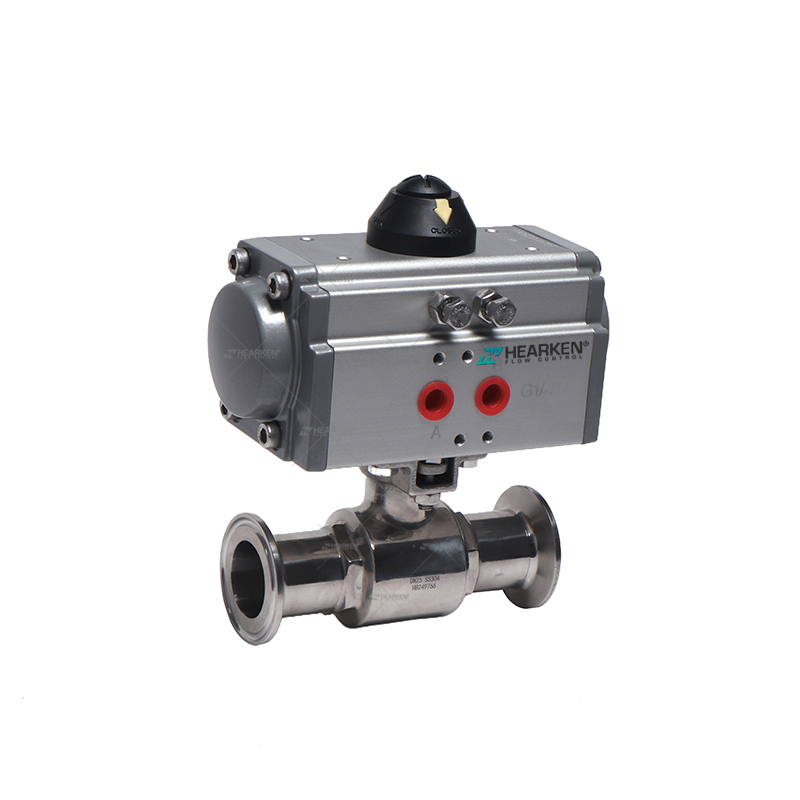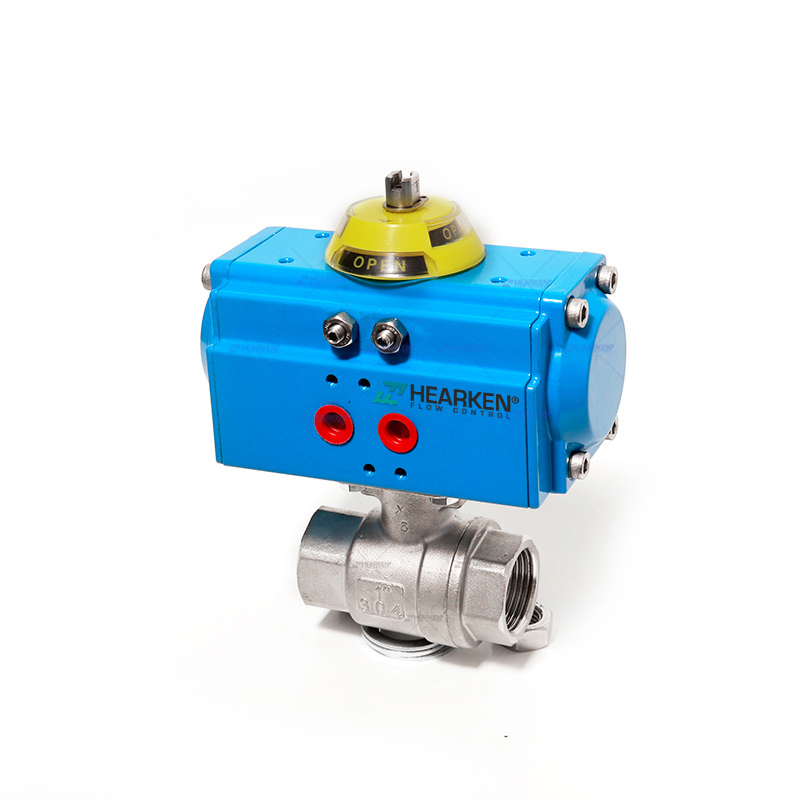Pneumatic Actuated Ball Valve
Pneumatic actuator ball valve manufacturers
Hearken is an excellent pneumatic actuator ball valve manufacturers.If you're in search of the most efficient, reliable, and innovative Pneumatic Actuated Ball Valve solutions, Hearken's extensive expertise and customer-centric approach make it the partner you can count on.
Hearken's Expertise in Ball Valve with Pneumatic Actuator
Quality Assurance: Being an ISO 9001 certified company, Hearken ensures the highest standards in every ball valve with pneumatic actuator it produces.
Customized Solutions: Hearken takes pride in listening to its customers, understanding their unique needs, and delivering bespoke valve automation solutions.
Comprehensive Certification: From applying for SIL 3 Certificate to ATEX, CE Certification, and even Explosion-proof and IP68 Weatherproof certificates, Hearken's pneumatic actuated ball valves are synonymous with quality and resilience.
Global Reach: With a passionate and focused approach, Hearken is growing its brand, becoming an industry leader not only in Pneumatic Actuators but also in Electric Actuators and Actuated Valves. Continuous Improvement: Committed to meeting requirements and enhancing customer satisfaction, Hearken continuously refines its Quality Management System, making it a reputable name in the Valve Control Device industry.
What is pneumatic actuated ball valve?
A Pneumatic Actuated Ball Valve is a remarkable innovation in the world of valve technology. It's one of those devices that seamlessly blend engineering finesse with practical functionality. Here's a more eloquent description: The Pneumatic Actuated Ball Valve consists of two main components: the ball valve and the pneumatic actuator. Together, the ball valve with pneumatic actuator forms an integral part of many industrial applications. The utilization of air pressure to control the valve offers a rapid response, high reliability, and adaptability to various operating conditions.
The Pneumatic Actuated Ball Valve is commonly used in sectors like petrochemical, manufacturing, and water treatment. It is highly praised for its ability to provide tight shut-off and ease of maintenance.
In the ever-evolving world of valve automation, the Pneumatic Actuated Ball Valve stands as a testament to innovative design and effective functionality. It's more than a mere mechanical device; it's a symphony of engineering that resonates with efficiency and control. Should your business need a solution that embodies these principles, consider the Pneumatic Actuated Ball Valve, where innovation meets practicality.
How does a pneumatic actuated ball valve work?
The Air Source: The journey begins with compressed air. In the world of pneumatic actuators, air is the fuel, the force that sets things into motion. It's prepared in a compressor and delivered through pipelines.
The Pneumatic Actuator: This is where the magic happens. The pneumatic actuator is the maestro of this mechanical orchestra. It takes the compressed air and transforms it into motion. Here's how:
Compressed air enters the actuator's chamber.The pressure of the air pushes against a diaphragm or piston.This creates a linear or rotary motion, depending on the design.
Ball Valve Positioning: The ball valve, a spherically shaped disc with a hole in the middle, is connected to the actuator's stem.In the open position, the hole in the ball is aligned with the flow path, allowing fluid to flow through.In the closed position, the ball is rotated so that the hole is perpendicular to the flow path, stopping the flow.
Control System Integration: To make this ball valve with pneumatic actuator dance to the tune of industry demands, it is often connected to a control system. This system:
Monitors the flow or other process parameters.Sends signals to the pneumatic actuator, commanding it to open or close the valve as needed.Allows for remote operation and automation, for the symphony to play on without a conductor's hand.
Feedback Mechanisms: Often, positioners and sensors are integrated to provide feedback on the valve's position, ensuring that the valve is responding as commanded.
Safety Features: The show must go on, but safely. Safety features such as explosion-proof certifications and weatherproofing (like IP68) might be included to ensure robust performance in various environments.
What is the difference between pneumatic and motorized valves?
Pneumatic Actuated Valves
The valve is controlled by air, and here's what sets it apart:
Actuation Mechanism: Utilizes compressed air to create motion. It's as sprightly as a jazz ensemble, making rapid moves.
Energy Source: Powered by compressed air systems, aligning perfectly with settings where such an air supply is present.
Response Time: Generally swifter, akin to a snappy drum solo.
Environment Suitability: Tailored for more rugged settings, including explosion-proof and weatherproof designs like IP68.
Control Flexibility: Adaptable to the rhythm of different processes, offering fine-tuning with various control components.
Cost Dynamics: May require more of an investment upfront but often strikes a chord with long-term efficiency.
Motorized Valves (Electric Actuated Valves)
These valves march to the beat of electricity, and here's their distinct performance:
Actuation Mechanism: Uses an electric motor, following a well-orchestrated symphony, precise and controlled.
Energy Source: Energized by an electric power source, offering versatility in various industrial applications.
Response Time: Can be more deliberate in response, akin to a measured string quartet.
Environment Suitability: May need special compositions to handle rugged environments, with corresponding certifications and protections.
Control Flexibility: Offers its modulation and finesse, with a wide array of control options.
Cost Dynamics: Generally has a friendlier overture in initial costs, but ongoing costs can vary.
What is the advantage of pneumatic valves?
1. Rapid Response Time
With the lively spirit of compressed air, these valves respond with quick agility, akin to a masterful drum solo, making them excellent for applications requiring prompt action.
2. Energy Efficiency
They dance to the tune of compressed air, which can often be an energy-saving serenade, particularly in facilities with existing air supply systems.
3. Robustness and Reliability
A pneumatic valve is like a rugged blues musician, performing unfalteringly in harsh environments. With features such as explosion-proof designs, IP68 weatherproofing, and more, they prove their mettle in various industrial settings.
4. Fine Control
These valves can improvise and adapt to the nuanced demands of different processes, thanks to their compatibility with regulators, positioners, and other control instruments. A symphony of precision, if you will.
5. Safety
In the event of a power failure, a pneumatic actuator can be designed to fail in a specific position (open or closed), like a graceful coda to a musical piece, ensuring safety and process integrity.
6. Cost Dynamics
Though the initial composition might require investment, the ongoing opera of operation might sing a more cost-effective tune, especially in large or specialized systems.
7. Compatibility with Hazardous Environments
These valves can perform the industrial ballet even in areas where electricity might not be the safest option, thanks to their air-driven nature.
8. Simplicity and Longevity
The pneumatic valve performs without excessive complexity, often leading to longer life and reduced maintenance. It's the classic tune that never goes out of style.
How to Select the Right Actuator
1. Type of Actuator
Pneumatic Actuators: Ideal for rapid response and where compressed air is available.
Electric Actuators: Suitable for precise control and where electricity is the preferred energy source.
Hydraulic Actuators: For applications needing high force and robust performance.
2. Operational Requirements
Torque Requirements: Calculate the torque needed to operate the valve. The actuator must meet or exceed this value.
Duty Cycle: Determine whether the actuator will be used continuously or intermittently.
Speed: Assess the speed at which the valve must open or close.
3. Environment Factors
Temperature: Consider the operating temperature and select materials accordingly.
Hazardous Conditions: For explosion-prone or harsh environments, opt for actuators with relevant certifications like ATEX, explosion-proof, or IP68 weatherproofing.
4. Control and Functionality
Control Signals: Choose an actuator compatible with the control system in use.
Modulating or On/Off: Determine whether you need precise control (modulating) or simple open/close functionality.
Feedback Requirements: Consider whether position feedback is required for monitoring and control.
5. Cost Considerations
Initial Investment: Weigh the upfront cost against the expected performance and longevity.
Operating and Maintenance Costs: Factor in energy consumption and potential maintenance expenses.
6. Compatibility
Valve Type and Size: Ensure that the actuator fits the valve both physically and in terms of operational parameters.
Industry Standards and Certifications: Consider industry-specific requirements such as ISO 9001, SIL 3 Certificate, or CE Certification.
7. Vendor Consideration
Reputation: Select a reputable manufacturer or supplier, such as one with a focused passion for valve automation and quality management systems.
Support and Warranty: Look for solid customer support and warranty options.
Applications of Actuated Ball Valves
1. Oil & Gas Industry
Flow Control: From upstream extraction to downstream processing, actuated ball valves control the flow of crude oil and natural gas with precision and reliability.
Emergency Shutdown: Ensuring safety in critical situations, these valves can be automated for immediate response.
2. Chemical Processing
Process Isolation: Actuated ball valves, especially those with pneumatic actuators, provide rapid isolation in chemical reactions.
Leak Prevention: With robust seals, these valves help prevent leakage of hazardous materials.
3. Water & Wastewater Treatment
Flow Regulation: A versatile performer in managing water flow in treatment plants, ensuring the right balance and direction of flow.
Remote Control: Especially with electric actuators, allowing for remote operation and automation.
4. Pharmaceuticals
Sanitary Applications: For sterile environments, actuated ball valves provide clean and precise control.
Batch Processing: Ensuring accurate flow control in various stages of pharmaceutical manufacturing.
5. Food & Beverage Industry
CIP (Clean-in-Place) Systems: Utilized in automated cleaning processes, where hygiene is paramount.
Temperature Control: Managing the flow of heating or cooling mediums to maintain optimal temperatures.
6. Power Generation
Cooling Systems: In nuclear, thermal, and other power plants, these valves manage cooling water flow.
Fuel Supply: Controlling the flow of fuel to burners and reactors.
7. Marine Applications
Ballast Systems: Managing water flow in ballast systems to stabilize ships.
Fuel Handling: Controlling the flow of fuel and lubricants within the vessel.
8. HVAC Systems
Temperature and Pressure Regulation: In commercial and industrial HVAC systems, providing precise control of heating or cooling fluids.
9. Pulp & Paper Industry
Process Control: Managing the flow of liquids and slurries within the various stages of paper manufacturing.
